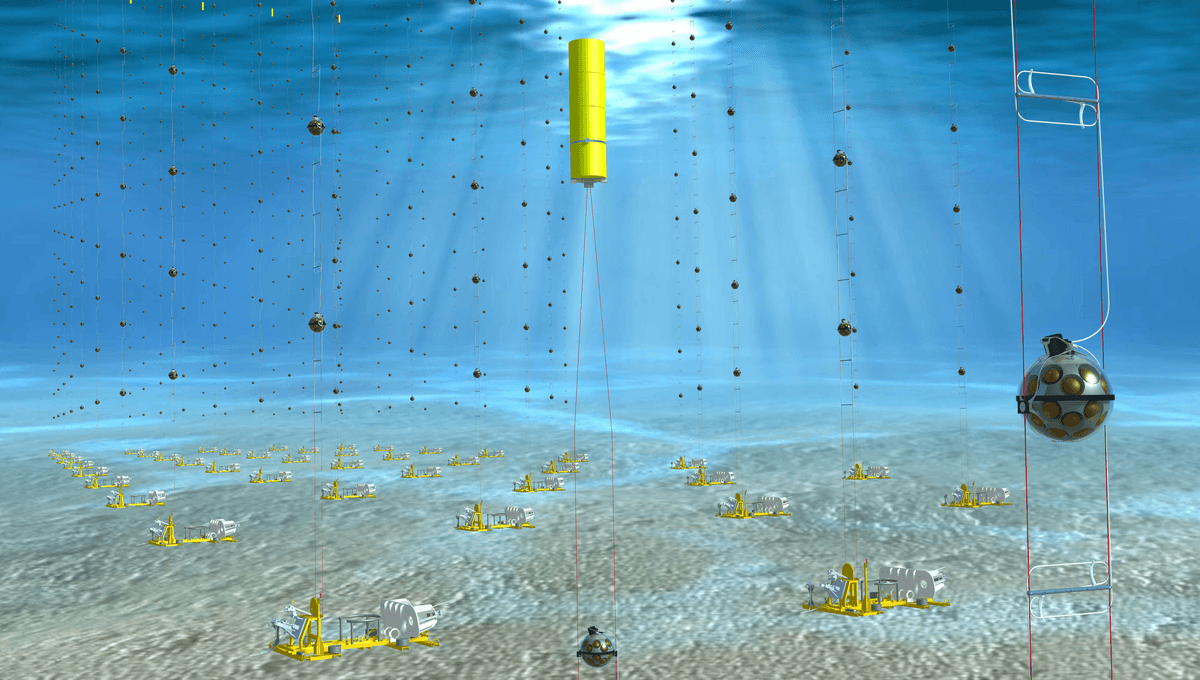
Information has been released on a neutrino estimated to have an energy of 220 peta electron volts (PeV). The previous record-holder was 6.05 PeV, and while there is a wide error bar on the latest discovery, even at the lower end of estimates it’s an order of magnitude above anything we’ve seen before. The source is yet to be identified, but implies an event of terrific power.
ADVERTISEMENT GO AD FREE
Last year, attendees at a conference on neutrino research were teased with hints of the most powerful example of this subatomic particle ever detected. Only those involved in the research, however, knew just how far off the charts the discovery was.
A paper now published on the event reports its energy as 120 PeV (with wide margins) but Professor Miroslav Filipovic of the University of Western Sydney told IFLScience: “There are two ways to measure the energy of particles like this.” The other measure, which gives a result of 220 PeV, is more relevant according to Filipovic, completely outshining anything seen before. It’s a little like if someone ran the hundred meters in a third of a second.
For a neutrino it’s almost unbelievable.
Professor Miroslav Filipovic
By comparison, Filipovic noted, the photons from your lamp have an energy of around 4 eV, so this discovery is around half a million billion times as powerful. No particle accelerator on Earth can produce neutrinos with a thousandth this energy.
“For a neutrino it’s almost unbelievable,” Filipovic told IFLScience, “And this is even though the instrument that detected it is only at one 10th of its final power.”
The instrument in question is KM3NeT, located beneath the Mediterranean Sea, which detects Cherenkov radiation produced by particles traveling faster than the speed of light in water.
ADVERTISEMENT GO AD FREE
Neutrinos are staggeringly abundant particles produced by many interactions of better-known particles. However, they have no electric charge, and interact so weakly with most of the rest of the universe that the vast majority pass through the Earth undetected.
Very occasionally, however, a neutrino will collide with part of the Earth or atmosphere, and produce a different type of particle, which will cause an avalanche of daughter products, all traveling in broadly the same direction. These particles move at close to the speed of light in a vacuum, and therefore faster than light in materials such as water, setting off the electromagnetic equivalent of a sonic boom.
KM3NeT is built to detect this radiation, and was already taking measurements in February 2023, despite being far from finished. The neutrino labeled KM3-230213A triggered the production of a muon in rock under Malta, and the particle cascade overwhelmed KM3NeT‘s closer components. More than 28,000 photons were detected, and their combined energy allowed the team Filipovic is part of to reconstruct the original object’s energy.
ADVERTISEMENT GO AD FREE
Although the original particle cannot be directly detected, Filipovic is completely confident it was a neutrino, based on its products. Its source is another matter. Although coming from somewhere in the vicinity of Orion, the location is vague enough that we can’t tell if its origins are inside or beyond the galaxy.
“The discovery represents the most energetic neutrino ever observed, and provides evidence that neutrinos of such high energies are produced in the universe. Detecting such an extraordinary particle brings us closer to understanding the most powerful forces shaping our universe,” Filipovic said in a statement.
He added to IFLScience that any of the universe’s most energetic events could be the cause, including: “A supernova, microquasar, gamma ray burst, or blazar.” At this stage, he considers a blazer – a quasar one of whose jets points straight at Earth – the most likely member of the crowded field.
An even more exotic possibility is a neutrino being created by cosmic rays interacting with the cosmic microwave background.
ADVERTISEMENT GO AD FREE
A statistical sample of many hyperenergetic neutrinos coming from the same source might reveal the answer.
The study is published in Nature.
Source Link: Highest Energy Neutrino Ever Detected Breaks Record By 3,500 Percent